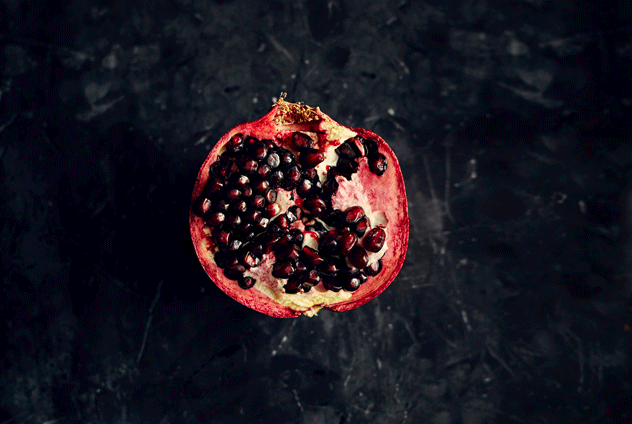Pomegranates. How much do you know about this delicious ruby fruit?
Pomegranates
ORIGINS
The word ‘pomegranate’ is derived from the Latin pomum granatum, meaning ‘apple of many seeds’. Although native to Iran, it was widely cultivated in the Mediterranean – where the Israelites, Greeks and Romans revered it. The pomegranate fruit traversed the world easily because it could withstand long-distance travel. Celebrated as a symbol of fertility and abundance due to its multitude of seeds, it was commonly used in theatrical descriptions by famed writers including Homer, Chaucer and Shakespeare.
BEST TO EAT WITH…
A good pomegranate has as a sweet, tangy flavour, with slight sourness. Widely used in Middle Eastern cuisine, the juice can be used to flavour drinks, dips, salads, soups and desserts. The pomegranate flavour is best paired with roasted walnuts, pistachios, or almonds; goats’ cheeses; tahini or sesame seeds; or other citrus fruits. The jewel- bright seeds can also be used to garnish creamy hummus, salty meats, or spiced chicken, lamb or venison dishes.
HOW TO STORE
The pomegranate is often exported, because its thick skin means it does not deteriorate quickly. In cooler areas, the fruit will live happily in a fruit bowl at room temperature for up to one month, but it can also be kept refrigerated for up to three months. The seeds can be separated from the membrane and chilled in a sealed container or frozen in ice-cube trays. The frozen seeds will not thaw well, however, so use the frozen juice in cooking.




